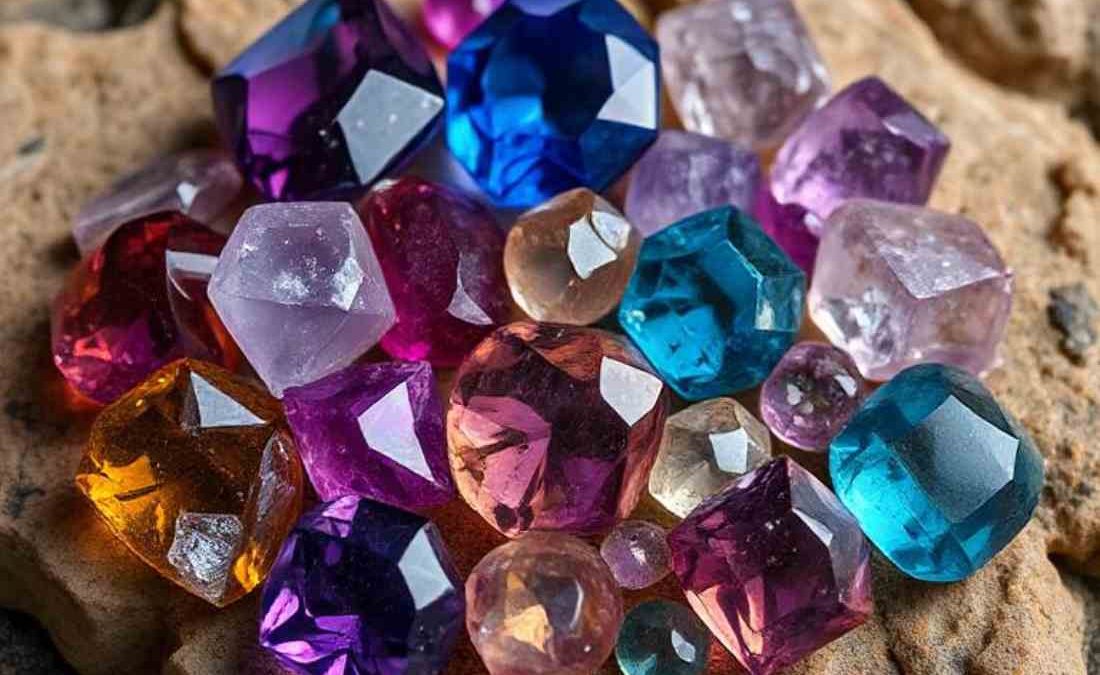Rare gemstones have captivated humanity for centuries with their mesmerizing colors, unique properties, and extraordinary rarity. These precious stones are prized by collectors, jewelers, and enthusiasts, often fetching astronomical prices due to their scarcity and beauty. This article explores some of the world’s rarest gemstones, their origins, how they are used, where they are found, and their role in jewelry design.
Table of Contents
Where Does It Come From?
Rare gemstones are formed under unique geological conditions, often requiring specific combinations of pressure, temperature, and mineral interactions over millions of years. Some of the rarest gemstones include:
- Painite: Once considered the rarest gemstone in the world, Painite was discovered in Myanmar in the 1950s. Its striking orange-red to brownish-red hue makes it highly sought after.
- Taaffeite: Found primarily in Sri Lanka and Tanzania, Taaffeite is so rare that it was initially mistaken for spinel. It exhibits a range of colors from lavender to violet.
- Grandidierite: This bluish-green gemstone was first discovered in Madagascar and is known for its striking pleochroism (displaying different colors from different angles).
- Red Beryl (Bixbite): Mined only in Utah (USA), this vibrant red gemstone is rarer than diamonds and forms in volcanic conditions.
Each gemstone has a unique origin story, often tied to remote and geologically distinct locations.
How It Works
Rare gemstones are valued not just for their beauty but also for their unique physical and optical properties:
- Refractive Index: Some rare gems, like Taaffeite, have a high refractive index, giving them brilliant brilliance.
- Hardness: While diamonds remain the hardest known mineral (10 on the Mohs scale), other rare stones like Grandidierite (7.5) and Painite (8) are durable enough for jewelry.
- Color-Changing Effects: Certain rare gems, such as Alexandrite, exhibit color changes under different lighting conditions, making them highly prized.
These properties influence how gemstones are cut, set, and used in high-end jewelry.
Where It Is Found
The locations of rare gemstones are often limited to a few places worldwide:
- Myanmar (Burma): A significant source of Painite, Jadeite, and rare rubies.
- Sri Lanka: Known for Taaffeite, Alexandrite, and Cat’s Eye chrysoberyl.
- Madagascar: Home to Grandidierite and rare sapphires.
- USA (Utah): The only known source of Red Beryl.
- Tanzania: Produces Tanzanite, a rare blue-violet gemstone found nowhere else.
Mining these gems is often labor-intensive, and their scarcity makes them even more valuable.
Design: Incorporating Rare Gemstones in Jewelry
Due to their rarity, these gemstones are often used in exclusive, custom-made jewelry pieces. Designers take special care to highlight their unique features:
- Minimalist Settings: To emphasize the stone’s natural beauty, bezel or prong settings in platinum or gold are commonly used.
- Statement Pieces: Rare gems like Red Beryl or Grandidierite are often featured as centerpieces in rings, pendants, and earrings.
- Vintage & Modern Cuts: Some collectors prefer antique cuts like rose or cushion cuts, while others opt for modern precision cuts to maximize brilliance.
Since these gemstones are so scarce, jewelry featuring them is often one-of-a-kind, making them highly coveted by collectors.
Conclusion
Rare gemstones are nature’s masterpieces, formed under extraordinary conditions and discovered in only a handful of places worldwide. Their unmatched beauty and scarcity make them some of the most valuable treasures on Earth. Whether admired in a museum, worn as jewelry, or kept as an investment, these gems continue to fascinate and inspire awe.


